Disclosure: This article contains affiliate links. We may earn a commission from purchases at no extra cost to you, which helps our travel content.
Standing on the deck of a wooden boat as it glided through the misty waterways of the Sundarbans, I couldn't help but marvel at how life's unexpected turns had brought me here. Two years ago, I was preparing PowerPoint presentations in a corporate office in Charlotte; now, as a theater intern embracing my second act at 58, I found myself in the world's largest mangrove forest, seeking the authentic rhythms of Bangladesh's rural performing arts. This journey into the Sundarbans region wasn't just about witnessing nature's grand spectacle—it was about finding the human stories performed on life's most authentic stages.
Finding Theater in the Mangroves: Khulna's Gateway to Cultural Immersion
My adventure began in Khulna, Bangladesh's third-largest city and the jumping-off point for Sundarbans expeditions. Rather than rushing straight to the mangroves, I spent two days exploring this riverside city that most tourists merely pass through. The local theater scene here operates on shoestring budgets that would make even my small Bakersfield company seem lavish by comparison, yet produces performances of astounding emotional resonance.
I was fortunate to attend a jatra performance—a traditional Bengali folk theater form—held in an open-air venue near the Rupsha River. The melodrama, exaggerated gestures, and live musicians created an atmosphere electric with community energy. Despite understanding little Bengali, the universal language of theatrical expression transcended words. My trusty pocket translator helped me grasp plot points, though the emotional beats needed no translation.
The next morning, I visited Khulna University's Fine Arts department where students welcomed me into their rehearsal space. We exchanged theatrical exercises—their traditional movement techniques for my Western character development approaches—creating a beautiful bridge between our different worlds.

💡 Pro Tips
- Book accommodations in Khulna at least 2-3 days before heading to the Sundarbans to acclimate and arrange proper permits
- Visit the local cultural office near Sonadanga Bus Terminal for information on upcoming performances
- Bring small gifts (art supplies, English theater books) for cultural exchanges with local performers
Homestay Hospitality: Living with a Fishing Family in Mongla
From Khulna, I traveled to Mongla, the gateway port to the Sundarbans, where I had arranged a three-night homestay with a fishing family through a community-based tourism initiative. My hosts, the Rahman family, welcomed me into their modest home built on stilts to withstand the seasonal flooding.
Their teenage son Kamal immediately appointed himself my cultural ambassador, teaching me to properly eat with my right hand from a banana leaf plate. Each morning, I joined Noor, the family patriarch, on his small fishing boat, where I learned the traditional techniques for catching hilsa, Bangladesh's national fish. My waterproof dry bag proved invaluable during these excursions, keeping my journal and camera safe from the inevitable splashes.
Evenings were spent on their small veranda, where neighbors would gather to share stories. One night, a local musician brought his ektara (one-stringed instrument) and performed haunting Baul folk songs that seemed to embody the soul of rural Bengal. When I mentioned my theater background, they insisted I perform something in return. My rendition of a monologue from Death of a Salesman—modified to incorporate some of the Bengali phrases I'd learned—earned appreciative laughter despite the cultural divide.

💡 Pro Tips
- Bring appropriate gifts for your host family (quality tea, school supplies for children, or practical household items)
- Learn basic Bengali greetings and thank you phrases before arriving
- Pack lightweight, modest clothing that covers shoulders and knees, especially for women travelers
Into the Sundarbans: Where Nature Performs Its Own Drama
The crown jewel of my journey was a two-day boat expedition into the heart of the Sundarbans, the vast mangrove forest that straddles the Bangladesh-India border. Rather than joining the standard tourist boats, I opted for a smaller vessel with a local guide named Mahmud, who had grown up in a village bordering the reserve.
As we navigated the labyrinthine waterways, Mahmud shared stories of growing up in the shadow of the forest, including hair-raising tales of villagers' encounters with Bengal tigers. The forest itself seemed to be engaged in an eternal performance—the tide retreating to reveal the mangroves' twisted breathing roots, then returning to submerge them in a twice-daily cycle.
We slept on the boat's deck under a canopy of stars, the nocturnal sounds of the forest providing nature's soundtrack. My compact sleeping pad made the hard deck bearable, while my insect repellent lotion kept the voracious mosquitoes at bay.
At dawn, we visited a forest ranger station where I was privileged to meet members of the Munda indigenous community who perform traditional dances to honor the forest spirits. Their tiger dance—a dramatic retelling of the eternal relationship between humans and the forest's apex predator—was a masterclass in physical storytelling that would impress any theater director back home.
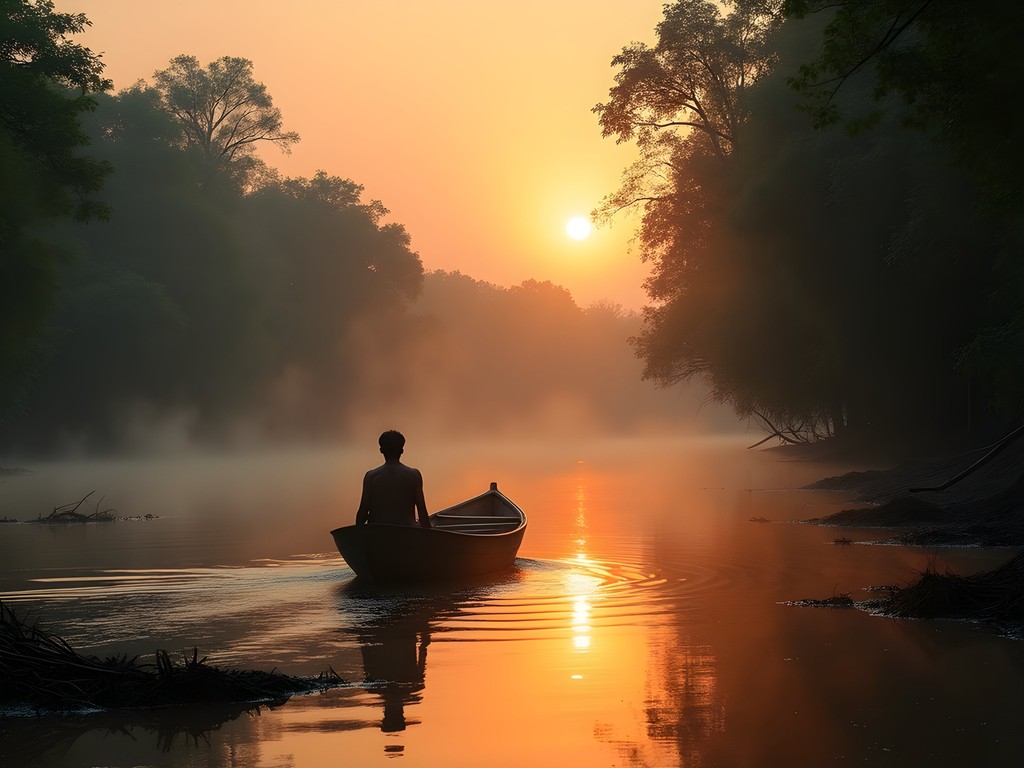
💡 Pro Tips
- Book your Sundarbans tour through community-based initiatives rather than large companies to ensure locals benefit
- Bring binoculars for wildlife spotting and a good camera with zoom lens
- Pack a headlamp with red light function to preserve night vision while moving around the boat after dark
Village Cultural Exchange: Learning Pottery and Folk Dance
My final days were spent in a small village on the edge of the Sundarbans where I participated in a cultural exchange program I'd discovered through a local NGO. Here, I was taught the basics of traditional pottery making by elderly artisans who shaped clay into functional works of art without using a wheel—just their skilled hands and simple tools passed down through generations.
The village's cultural preservation efforts extended to their performing arts traditions. Each evening, different families took turns hosting performances in their courtyards. I was particularly moved by the Gambhira folk dance, where masked performers enacted social commentaries with surprising humor and poignancy.
When it was my turn to share, I taught basic theatrical warm-ups and improvisation games I use with my theater students back in Bakersfield. The children were particularly enthusiastic participants, their natural expressiveness requiring no translation. My portable Bluetooth speaker came in handy for playing music during these impromptu workshops.
On my final night, the village headman presented me with a hand-carved wooden mask representing Bonbibi, the forest goddess who protects honey collectors and fishermen who venture into the Sundarbans. It now hangs in my modest Bakersfield apartment, a daily reminder that authentic theater exists wherever humans gather to share stories—whether in professional venues or humble village courtyards.
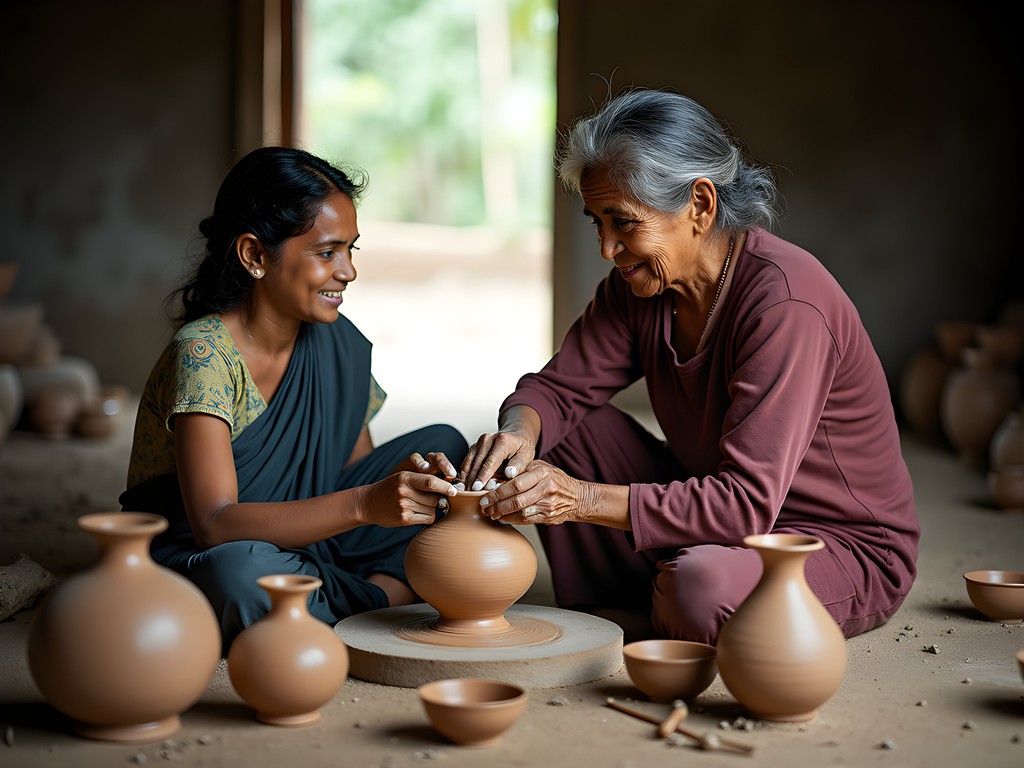
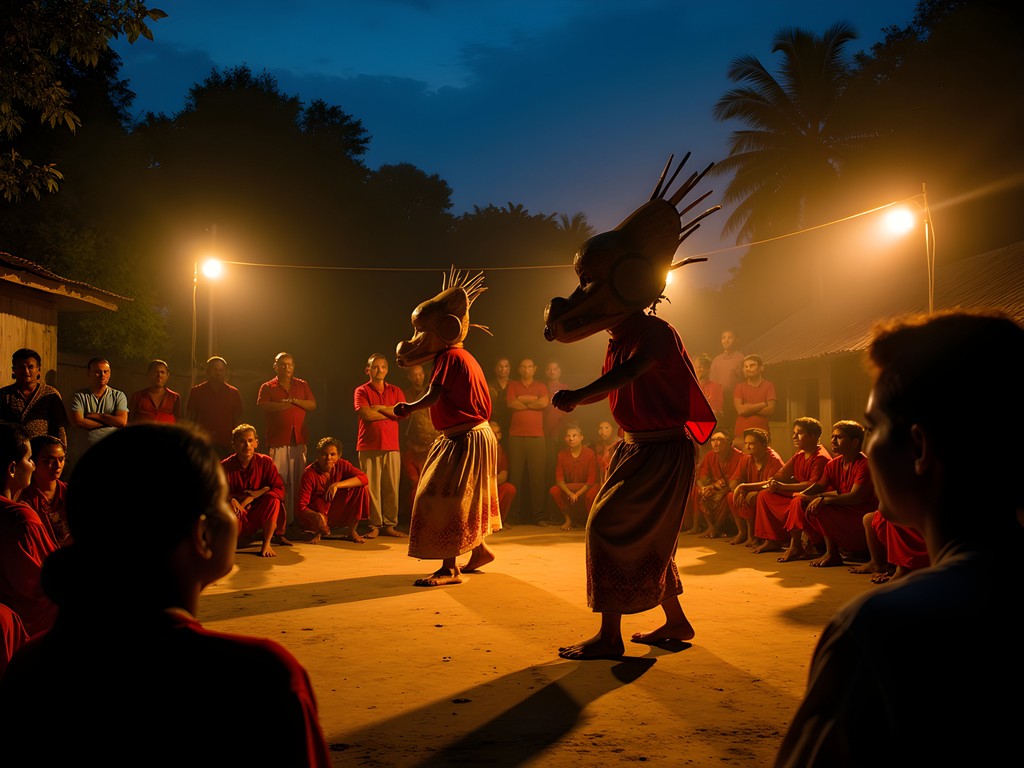
💡 Pro Tips
- Connect with local NGOs before your trip to arrange cultural exchange opportunities
- Bring photos of your home country/culture to share with locals
- Learn a simple song or story from your culture to share in exchange for their performances
Final Thoughts
As my boat pulled away from the village dock on that final morning, I felt the weight of the wooden Bonbibi mask in my bag—a tangible reminder of the intangible connections I'd formed. At 58, reinventing myself as a theater intern had seemed like a radical act of faith. Yet here in Bangladesh's Sundarbans region, where life itself is a precarious performance balanced between land and water, I found validation for my mid-life pivot.
The theatrical traditions I encountered weren't preserved in climate-controlled museums or lavish venues but lived vibrantly in everyday spaces—fishing boats, village courtyards, and humble homes on stilts. They reminded me that authentic storytelling doesn't require elaborate sets or technical wizardry, only the human desire to connect and communicate.
If you're considering your own journey to Bangladesh's Sundarbans region, I encourage you to slow down, step off the typical tourist path, and seek out these cultural exchanges. The rewards—genuine connections across language barriers, ancient traditions experienced firsthand, and the warm hospitality of people who have little materially but share generously—will far outweigh any temporary discomforts. After all, isn't that what both travel and theater ultimately offer us? The chance to step into another's story, if only briefly, and return to our own lives transformed.
✨ Key Takeaways
- Community-based tourism initiatives provide the most authentic cultural experiences in the Sundarbans region
- Spending time in Khulna before your Sundarbans expedition allows you to discover local performing arts traditions
- Bringing small, thoughtful gifts facilitates meaningful cultural exchanges with local families and artists
📋 Practical Information
Best Time to Visit
November to February (winter)
Budget Estimate
$30-50 USD per day including homestays, local food, and small boat tours
Recommended Duration
7-10 days
Difficulty Level
Moderate

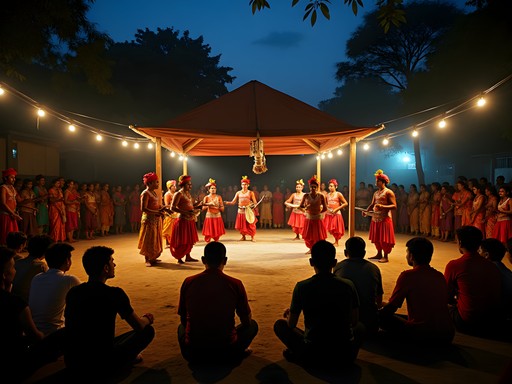

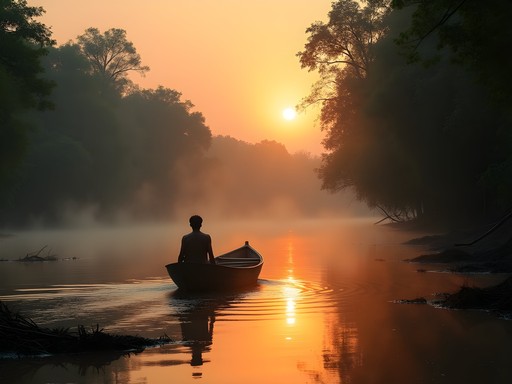










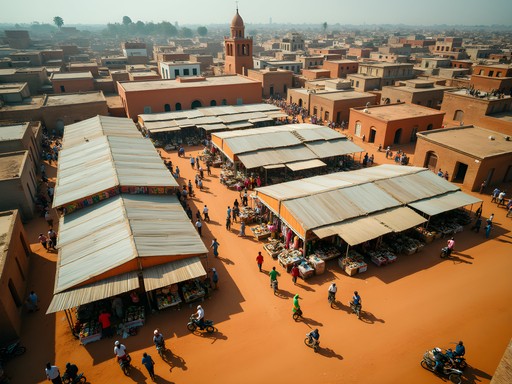
Comments
moonfan
OMG those photos of the misty waterways are STUNNING!!! And the mask you got as a souvenir looks so authentic and meaningful! What an incredible experience you had!!
travelone
How difficult was the language barrier? Did you find many people who spoke English or did you learn some Bengali beforehand?
Aiden Jackson
The language barrier was definitely there! In Khulna city, I found some English speakers, but in the villages, very little. I learned about 20 basic Bengali phrases before going which helped tremendously. Lots of hand gestures and smiles filled in the gaps!
Scarlett Bryant
Aiden, your immersion approach is exactly what travel should be about. I visited the Sundarbans last year on a business trip to Bangladesh and regrettably only had time for a day tour. The contrast between Khulna city and those serene waterways was striking. Did your host family arrange the boat trip, or did you book through an operator? I'm planning to return with more time specifically for a homestay experience.
Aiden Jackson
Thanks Scarlett! The family I stayed with had connections with local boatmen, so it was arranged through them. Much more affordable and authentic than going through tour operators in Khulna. Happy to share contacts if you're heading back!
Scarlett Bryant
That would be fantastic, Aiden. I'll DM you for details. The personal connections make all the difference.
freeguy
This sounds amazing! I've never thought about visiting Bangladesh before but now I'm intrigued.
wanderlust_traveler
How safe did you feel in the more remote villages? Planning a solo trip and wondering if it's doable.
Aiden Jackson
I felt extremely safe the entire time. The Bangladeshi hospitality is genuine, and people look out for visitors. Just be respectful of local customs, especially in more traditional villages. Having a local guide helps bridge any language barriers too.
Claire Hawkins
I'll second what Aiden said. We traveled as a family, but met several solo travelers who had nothing but positive experiences. The people in the Sundarbans region are incredibly hospitable.
Nicole Russell
Aiden! This post couldn't have come at a better time! I'm planning my Bangladesh trip for next spring and the Sundarbans just shot to the top of my list! Your description of that misty morning boat ride gave me serious wanderlust shivers. I'm especially intrigued by the theater traditions you mentioned - was that something regular visitors can experience or did you have special connections? Also, how was the food situation with dietary restrictions? I'm vegetarian and always a bit nervous about homestays where refusing food might seem rude. Your pottery lesson sounds incredible too - definitely adding that to my must-do list!
springbuddy
That Bonbibi mask photo is incredible! The craftsmanship is just wow. Did you bring one home?
Aiden Jackson
I did! It's now hanging in my living room and always starts conversations. The local artisan spent days carving it.
springbuddy
That's so cool! Definitely a meaningful souvenir that supports local artists. Way better than typical tourist trinkets.
islanddiver1961
Those folk dances look amazing! Did you actually perform with them?
Aiden Jackson
They insisted I join in! Probably gave them a good laugh with my terrible coordination 😂
mountainwalker
Just got back from Bangladesh last month and your post is bringing back all the feels! We did a similar homestay near Mongla though our experience was a bit more touristy than yours sounds. One tip for anyone going: bring photos of your family/home to share. Created instant connections when language failed us. Also, the pottery workshop you mentioned - was that in Bagerhat? We tried something similar and my attempts were hilariously bad compared to the 8-year-old working next to me!
Claire Hawkins
Your post brought back so many memories! We visited the Sundarbans with our kids (8 and 10) last year, and it was incredible how welcoming the local families were. The children learned to make clay pots in one of the villages, and my daughter still keeps her little creation on her shelf. The folk performances were a highlight for us too - my son was completely mesmerized by the masks and costumes. Did you get to try making pitha? The sweet rice cakes that locals taught us to make were our favorite food discovery there. One tip for families considering this trip: pack light but bring proper mosquito protection, especially if traveling with kids. We used insect repellent which worked wonderfully without the harsh chemical smell.
Aiden Jackson
Claire, so glad to hear your kids connected with the experience too! Yes, I did try making pitha - the coconut ones were my favorite. And great tip about the mosquito protection, the Sundarbans definitely has its fair share of them!
Venture X
Premium card with 2X miles, $300 travel credit, Priority Pass